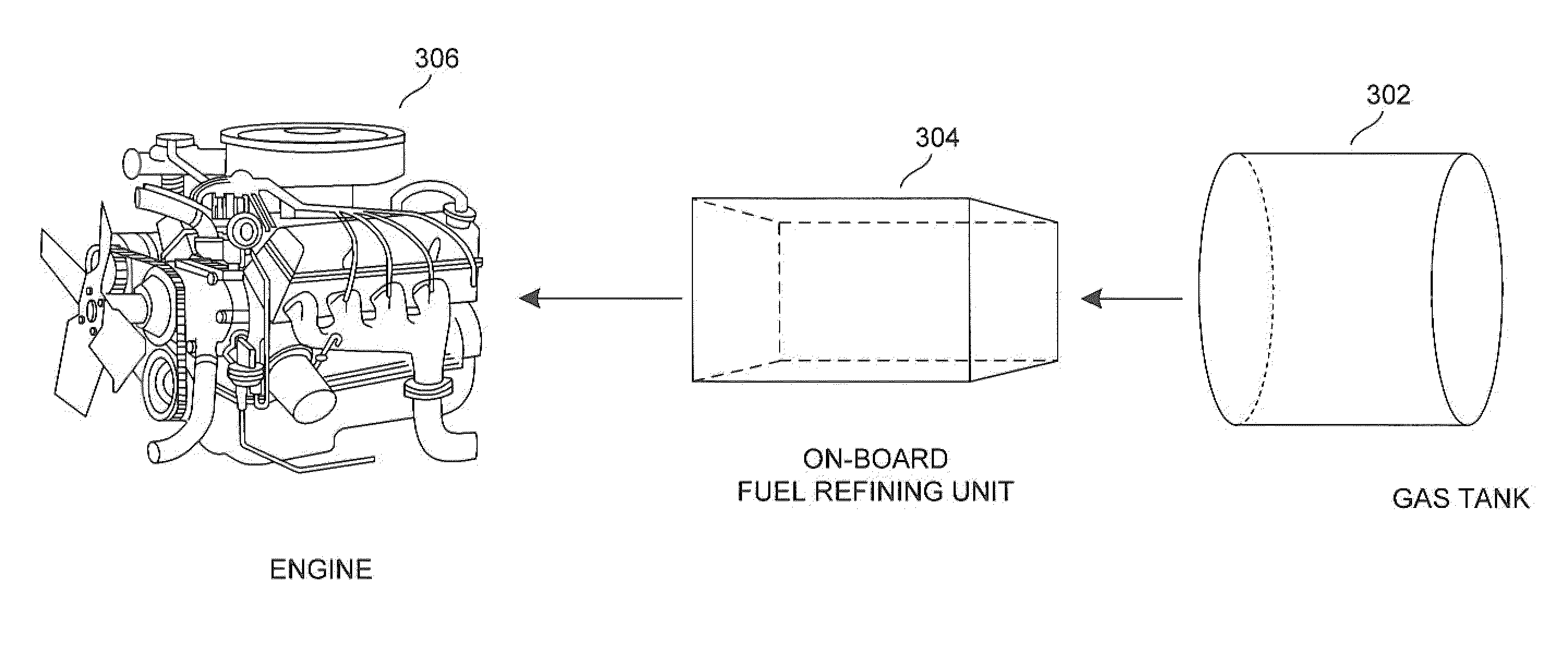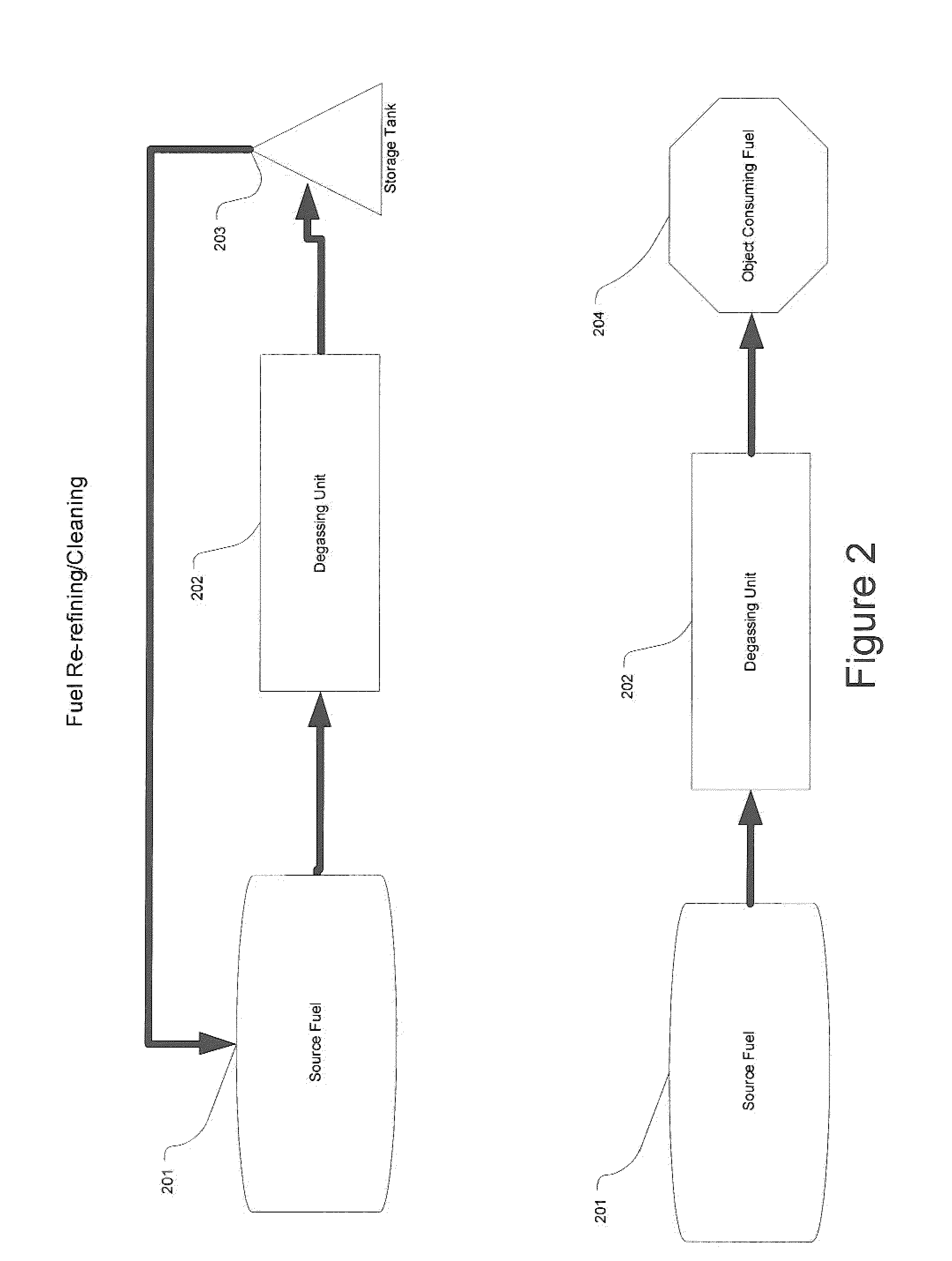Degassing of hydrocarbon fuel
- Summary
- Abstract
- Description
- Claims
- Application Information
AI Technical Summary
Problems solved by technology
Method used
Image
Examples
Embodiment Construction
[0019]Various embodiments of the present invention are directed to cleaning, re-refining, specifically modifying, and degassing hydrocarbon fuel at a point in time, following initial refinement and processing, and in a location where a final, finishing refinement can most effectively prepare the fuel for combustion. Embodiments of the present invention may be used on-board vehicles, within stationary fuel-reprocessing and re-refining stations, within mobile fuel-processing systems, including mobile fuel-delivery systems, fuel-storage systems, fuel-dispensing systems, and in many other situations in which fuel-refinement and / or reprocessing, prior to combustion, leads to better fuel efficiency, less pollutant emission, and other advantages.
[0020]FIG. 2 illustrates on-board fuel refining that represents method-and-system embodiments of the current invention. As shown in FIG. 2, rather than fuel refining being carried out only once, at the oil refinery (102 in FIG. 1), in one embodimen...
PUM
| Property | Measurement | Unit |
|---|---|---|
| Efficiency | aaaaa | aaaaa |
| Temperature | aaaaa | aaaaa |
| Force | aaaaa | aaaaa |
Abstract
Description
Claims
Application Information
 Login to view more
Login to view more - R&D Engineer
- R&D Manager
- IP Professional
- Industry Leading Data Capabilities
- Powerful AI technology
- Patent DNA Extraction
Browse by: Latest US Patents, China's latest patents, Technical Efficacy Thesaurus, Application Domain, Technology Topic.
© 2024 PatSnap. All rights reserved.Legal|Privacy policy|Modern Slavery Act Transparency Statement|Sitemap



